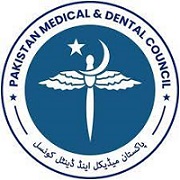COMPARISON OF TWO TECHNIQUES OF TREATING GARTLAND TYPE III SUPRACONDYLAR FRACTURE OF HUMERUS IN CHILDREN
Abstract
Background: Supracondylar fractures of humerus are one of the largest sources of serious problems and treatment controversy in childhood fractures. The advantages and disadvantages of different methods of treating supracondylar fractures of humerus in children are still evolving and need to be investigated.
Objective: To compare the effectiveness of two techniques of treating Gartland type III supracondylar fractures of humerus in children
Materials and Methods: This quasi-experimental study was carried out at Orthopedic Unit, Jinnah Hospital, Lahore from 22nd August 2007 to 31st May 2008. Sixty patients selected by non-probability sampling with Gartland type III supracondylar fracture of humerus were divided in Group A and B with 30 patient in each group. After stabilizing patients, group A was managed with closed reduction and percutaneous pinning and group B with open reduction and internal fixation. Patients were discharged when stable and followed clinically and radiologically for effectiveness of reduction and union of fracture at 2, 4, 8 and 12 weeks.
Results: There were 78.3% males and 21.7% were females. Majority of patients (36.7%) were between 5-7 years of age. Right humerus was fractured in 63.3% of patients. Most common mode of injury (40%) was fall during play. Eighty percent of children were presented in 1st 24 hour of injury. Sixty percent of children in group A had a hospital stay of 2 days and in group B, 60% had hospital stay of 4-5 days. In group A, 16.6% patients developed postoperation complication and in group B, 46.7% developed complications. Functional outcome was excellent in 73.7% in group A and 60% in group B. Radiologically, callus formation was relatively poor to start in group B.
Conclusion: Closed reduction & pining under image intensifier is as good as open reduction and internal fixation for these fractures in children with early callus formation.






